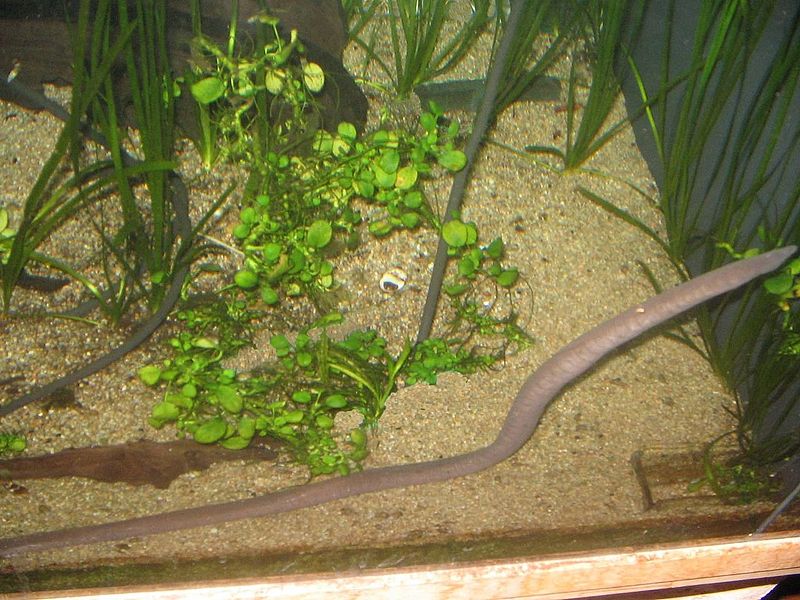Hello, Frank Indiviglio here. As a child, I constantly combed the pet stores of the Bronx and Manhattan in search of the odd catfishes, lungfishes and eels I so favored. I distinctly recall first coming upon some creatures labeled as “rubber eels”, and realizing that I was looking at something special – I just didn’t know exactly what! The blue-gray “fish” were indeed quite rubbery in texture and did look like eels, yet something was “off”. In time, I learned that these odd beasts were amphibians, specifically aquatic or River Cauca Caecilians, Tylphlonectes natans.
Natural History
Today, so many years later, you can still find these caecilians being sold as rubber eels. The River Cauca caecilian is one of the  few aquatic members of this little studied amphibian order (the Gymnophiona), and, even now, is the only one to regularly appear in the trade, or even in zoos. They are found only within the drainages of 2 rivers systems in northern Columbia and northwestern Venezuela, and little is known of their lives in the wild.
few aquatic members of this little studied amphibian order (the Gymnophiona), and, even now, is the only one to regularly appear in the trade, or even in zoos. They are found only within the drainages of 2 rivers systems in northern Columbia and northwestern Venezuela, and little is known of their lives in the wild.
Aquatic Caecilians in the Aquarium
River Cauca Caecilians are quite hardy when given proper care, and may even surprise you with young, which are born alive and have external gills. I’ve bred them in a well-filtered (undergravel) 20 gallon aquarium at a pH of 7 and temperature of 76 F, but one experienced keeper advises that they fare better in acidic water, and recommends sphagnum moss as a substrate. They may reach 24 inches in length, but most top out at 12-16 inches.
Caecilians are quite shy at first, and must be provided with subdued lighting and artificial caves, PVC pipes, live plants and the like as shelter. Those I’ve kept have become quite bold after a time, leaving their hideouts by day when scenting the earthworms, blackworms and prawn that are their favorite foods. A few individuals learned to take frozen foods and shrimp pellets, but live food is definitely preferable.
Fish keeping experience will serve you well in caring for these fascinating amphibians…with so much still unknown about them, I hope that more aquarists take up the challenge!
Further Reading
You can read more about this and other caecilians here.
Please write in with your questions and comments.
Thanks, until next time,
Frank Indiviglio
Tylphlonectes natans image referenced from wikipedia and originally posted by Christophe cagé
 That Fish Blog – Aquarium Advice and Information
That Fish Blog – Aquarium Advice and Information

